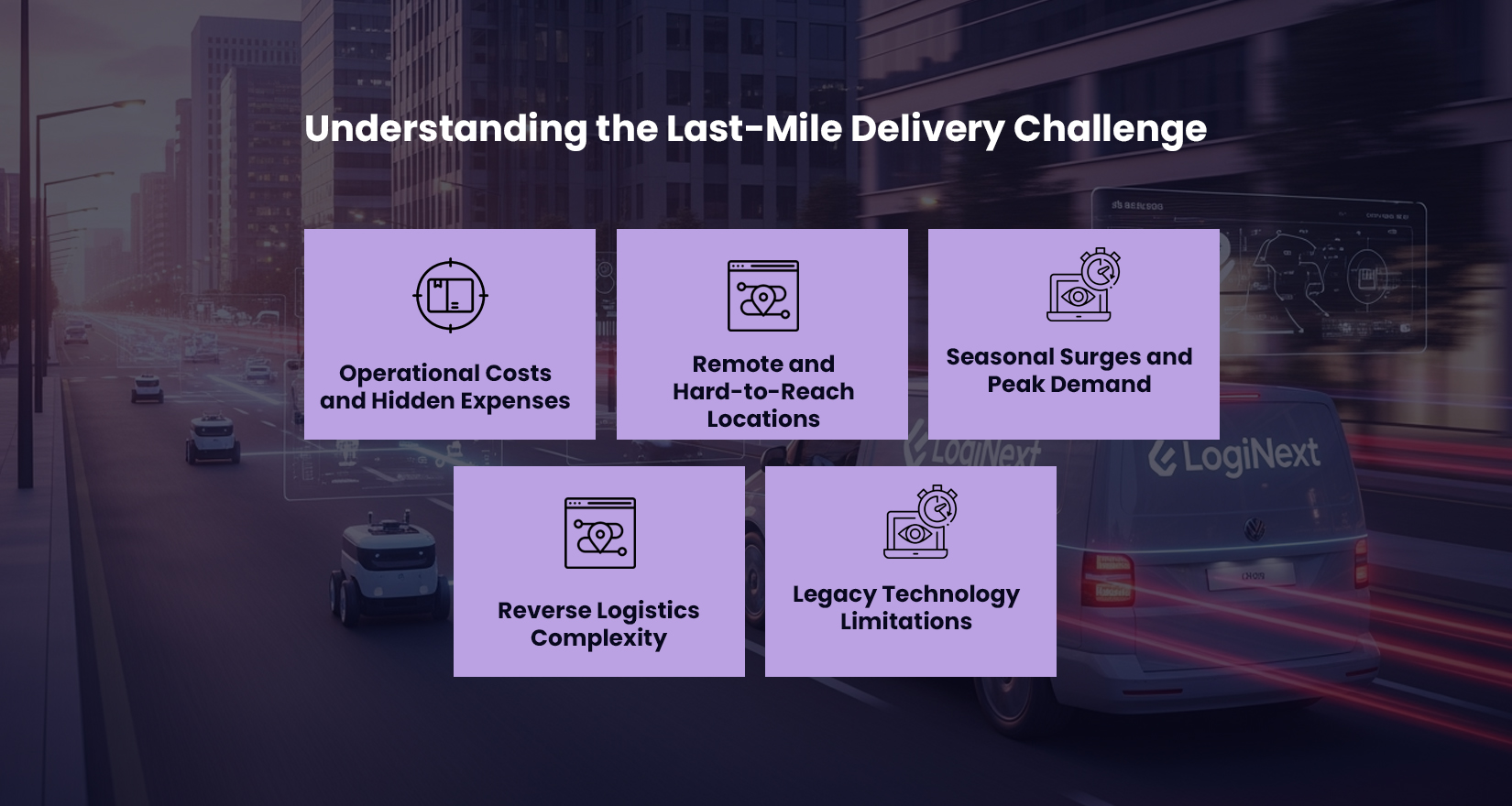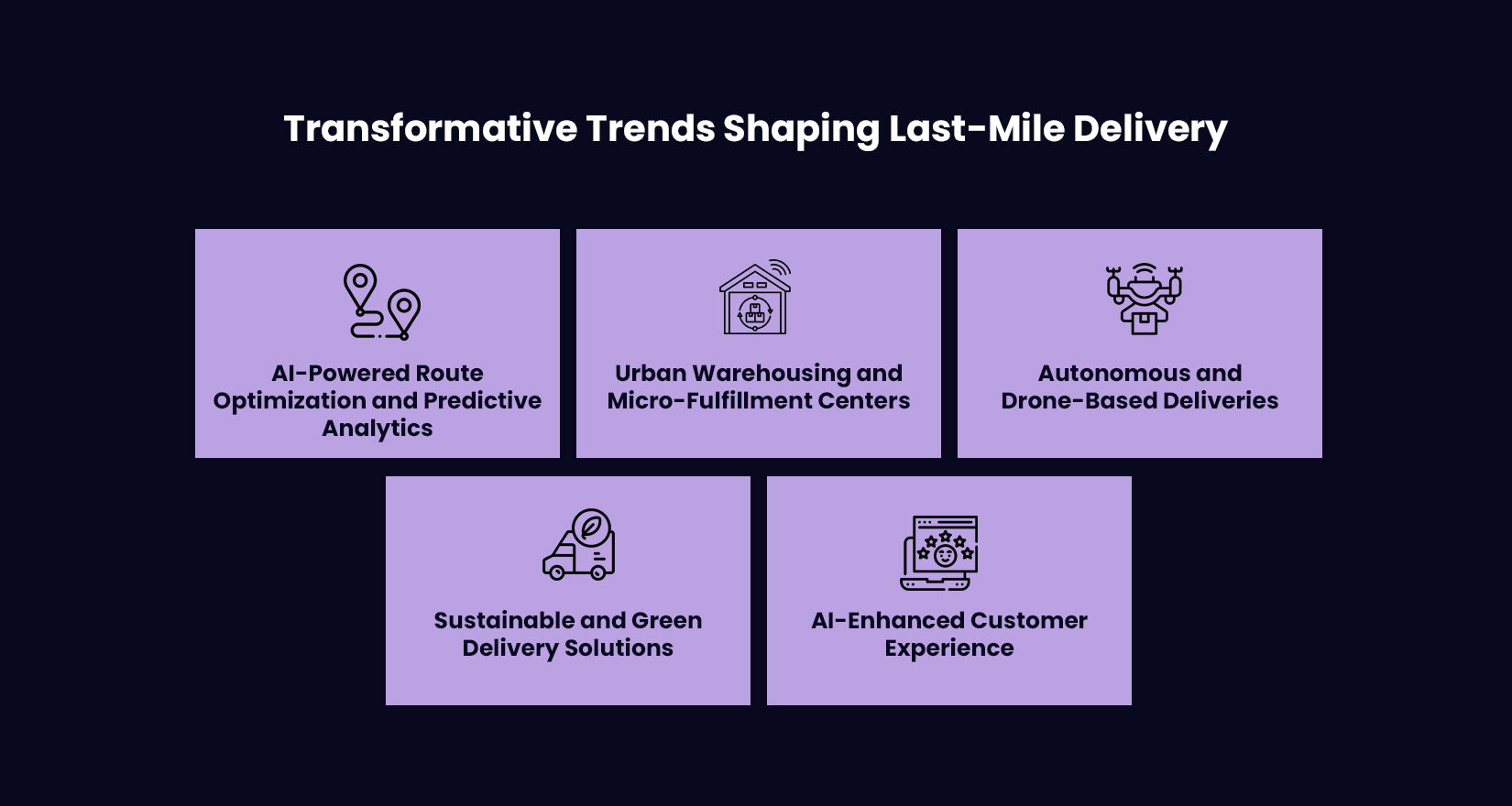
Smart, Fast, AI: LogiNext’s Vision for Last-Mile Delivery
The final delivery segment of the supply chain—the last mile—is evolving beyond merely delivering a package from point A to point B. Starting in 2025, the delivery last mile is all about speed, reliability, sustainability, and intelligence. Companies across sectors are wondering, how are we going to get products to consumers faster, more effectively, and with a lower cost?
Predictive research suggests the global last mile delivery market will grow from $197 billion in 2025 to $352.7 billion by 2035, for a CAGR of 6%. Vans and trucks are the dominant mode of delivery with a 36.2% share. However, non-autonomous deliveries are still the leading mode with a 58.7% share. The B2C segment is the largest growth factor and regions such as China and India are the early adopters. While Germany, France, and the UK are the front-runners for sustainable, AI-based solutions for last mile delivery.
In this changing landscape, LogiNext is changing the delivery last mile with its AI-based technology. With this it enables businesses to achieve operational efficiency, customer satisfaction, and profitability.
Understanding the Last-Mile Delivery Challenge

Essentially, last mile delivery means the last stage of the logistics process. The delivery of an item from a distribution center to a customer’s location. Though this stage may seem simple, it is easily the most complicated and expensive part of the supply chain. It often represents as much as 53% of total shipping costs in e-commerce and retail.
Key Challenges Include:
1. Operational Costs and Hidden Expenses:
There are other costs that accrue when we consider fuel spent, wages for drivers, vehicle maintenance, and other inefficiencies in routing. Add to that the ‘what ifs’ common in delivery. Unexpected last-minute cancellations, unsuccessful cash-on-delivery attempts, changes in availability of customer, they all help to accumulate costs. Without utilizing last mile delivery software to intelligently route drivers and manage dispatch decisions, companies continue to suffer from additional costs and limited profitability.
2. Remote to Hard-to-Reach Locations:
Deliveries to remote and less developed areas can be executed, but can also be filled with challenges. Poor roads and infrastructure, no or poor connectivity, and unpredictable weather. All of these circumstances help to inflate delivery timelines and also create high volumes of “Where is my order?” (WISMO) calls. Thereby, increasing the burden of additional operations.
3. Seasonal Surges and Peak Demand:
Holidays, marketing promotions, and sales events typically drive sharp increases in delivery throughput and volume. Adding temporary workers or vehicles is often only a partial solution; the result is delays, an increase in returns to origin, and frustrated customers.
4. Reverse Logistics Complexity:
It is critical for carriers to manage returns effectively. Whether it is arranging for package pickup, updating inventory, or issuing customer refunds, ineffective reverse logistics can erode a carrier’s margin, slow business operations, and damage customer trust.
5. Legacy Technology Limitations:
A number of operators still rely on outdated systems for route planning, tracking, or performance monitoring. This legacy technology has not kept pace with the demands of today’s business or the realities of modern last-mile logistics. It cannot efficiently handle real-time disruptions, dynamically applied time windows, or the additional complexity brought to modern logistics.
Transformative Trends Shaping Last-Mile Delivery

To overcome these challenges, companies are embracing innovation:
1. AI-Powered Route Optimization and Predictive Analytics:
AI is revolutionizing last mile logistics. Routes with multiple stops are efficiently optimized, demand is accurately forecasted, and delivery assignments can be dynamically reassigned at the drop of a hat, likely in real time. Predictive analytics are even able to forecast traffic conditions, weather, and customer availability, which minimizes delays and operational costs.
For example, AI can efficiently combine parcels that are close together, reduce the amount of fuel used to transport parcels, and locate items in your inventory closer to areas of high demand so they are able to offer same day or next day shipping.
2. Urban Warehousing and Micro-Fulfillment Centers:
Geographic proximity matters. For example, micro-fulfillment centers (MFCs) and urban warehouses provide more efficient storage of inventory closer to the consumer to improve transit times and reduce costs. Partnering this technology with AI will ensure prompt processing of orders even during peak times.
3. Autonomous and Drone-Based Deliveries:
Delivery by drone and autonomous vehicle is quickly becoming the delivery technology of last mile logistics. Drones allow for quick contactless delivery, while self-driving vans will enhance the speed and efficiency of the delivery process. Companies operating within drone delivery in China, the U.S. and Europe have already begun to emerge.
4. Sustainable and Green Delivery Solutions:
Environmental considerations will reduce carbon footprints and costs through the use of electric vehicles (EVs), a business strategy using cargo bikes, and environmentally friendly packaging. By using AI proven routing technology to reduce unnecessary trips, further sustainable delivery solutions can be developed.
5. AI-Enhanced Customer Experience:
Customer expectations are shifting to go beyond just speed related to the last mile logistics experience. The last mile experience will incorporate systems driven by AI that offer real-time tracking of orders, proactive notifications and updates. Thereby, allowing flexible scheduling and more efficient return options, and ultimately these will help reduce friction and improve customer loyalty.
LogiNext: Leading the AI-Powered Last-Mile Revolution
LogiNext is a leader in AI-powered last-mile delivery solutions, leveraging advanced technology with an ecosystem that scales to manage larger operations, improving your operations and enhancing the customer experience.
Key Differentiators:
1. AI-Driven Route Planning & Dynamic Allocation:
Smart algorithms help allocates delivery requests to the best couriers in order to increase on time rates and improve operational optimization.
2. Real-Time Tracking and Visibility:
GPS enabled tracking will allow both customers and operators to know locations in real time and reduce WISMO calls.
3. Seamless Reverse Logistics:
AI assisted returns minimizes unnecessary trips and extra costs by building out the return process and routes.
4. Scalable Peak Demand Management:
Your business can mitigate seasonal spikes seamlessly with predictive AI models.
5. Integration with Autonomous & Green Solutions:
Supported for a hybrid delivery ecosystem that incorporates electric vehicles, drones, and autonomous vehicles for an environmentally conscious approach.
Looking Ahead: The Future of Last-Mile Delivery
The next ten years will look like revolutionary changes in:
– Autonomous fleets for dense urban deliveries.
– Drones networks for rapid delivery and contactless shipping.
– Fully sustainable delivery ecosystems with electric vehicles and carbon neutral delivery schemes.
– AI predictive platforms to predict disruption and help orchestrate businesses that deliver to customers.
Businesses with an AI solution, an ability to scale solutions, and a customer led culture will be at the forefront. LogiNext has already raised the bar.
Conclusion
Last mile logistics is no longer just a logistics function, it is now key to customer experience and business profitability. With operational, environmental, and technological challenges, businesses need an intelligent solution to compete in last mile logistics.
LogiNext’s intelligence-driven last mile delivery software consolidates AI-driven optimisation, real-time tracking, sustainable delivery models, and scalable logistics management to one platform. The last mile may be the last mile, but it is LogiNext’s first mile of smarter, faster and more sustainable logistics delivery.
2







@LogiNext